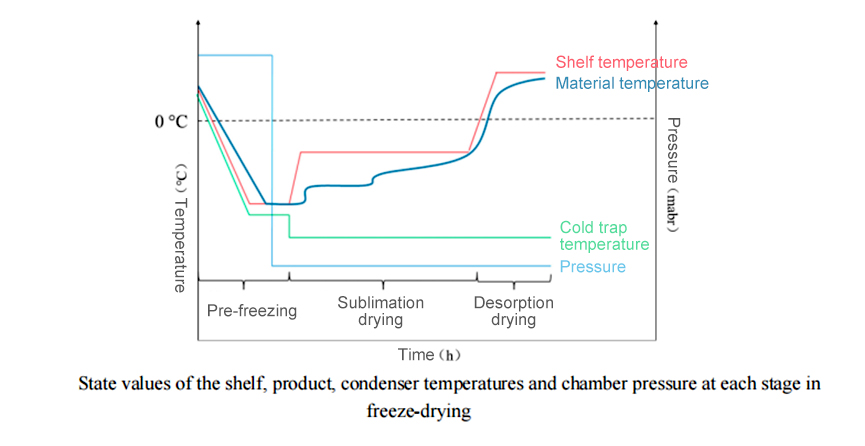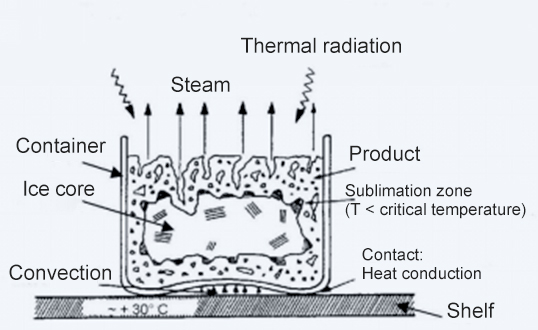Freeze drying is generally divided into three stages: pre-freezing, sublimation drying and desorption drying.

1. Prefreezing
Prefreezing is to solidify the free water of the material, giving the dried product the same shape as before drying, preventing irreversible changes such as bubbling, shrinkage, concentration and solute movement during vacuum drying, and reducing the solubility of the material and the change of the material's life characteristics caused by the temperature drop. Prefreezing plays a vital role in the quality of freeze-dried products, and must meet two basic requirements: appropriate cooling rate and appropriate final temperature. The cooling rate depends on: the temperature of the cold source, the number of samples, the volume and surface area of the container, and the heat transfer between the sample container and the cold environment. Too fast a cooling rate will cause intracellular ice formation, and too slow a cooling rate will cause damage to the living body and death. Slow cooling ice crystals are large, and rapid cooling ice crystals are small. Quick-frozen products have a uniform appearance and consistent color. Small ice crystals cause less protein denaturation and less condensation. For products with living substances, quick freezing has a low mortality rate and saves freezing time. The final temperature of pre-freezing should be lower than the eutectic point temperature or glass transition temperature of the solution to ensure that the solution of the suspended biological material can be completely frozen. Otherwise, a small amount of liquid will "boil" and produce bubbles when vacuuming, making the surface of the product uneven. For products with low requirements, the final temperature of pre-freezing only needs to be lower than the eutectic point temperature, generally 10 ℃ to 20 ℃ lower than the eutectic point temperature.
2. Sublimation drying
Sublimation drying is also called primary drying. The frozen product is placed in a closed vacuum container and heated to make the ice crystals sublimate into water vapor and escape, thereby dehydrating and drying the product. Drying is gradually pushed inward from the outer surface, and the gaps left after the ice crystals sublimate become the escape channels for the sublimated water vapor in the future. When all the ice crystals are removed, the first stage of drying is completed, and about 90% of all water is removed at this time. In this process, there is both heat transfer and mass transfer. The heat absorbed by the sublimation of ice crystals is supplied by the heating plate, and the sublimated water vapor escapes through the gaps in the dried layer. However, during the drying process, the undried particles in the material should always be kept in a frozen state. If the temperature is too high, the ice crystals will melt, so the temperature of the frozen layer of the item should be lower than its eutectic point. In addition, it should not be heated too quickly so that the temperature of the dried layer exceeds the disintegration temperature. The so-called disintegration temperature means that when the temperature reaches a certain value, some dried products will lose their rigidity and collapse, lose their loose and porous properties, and make the dried products sticky, increase their specific gravity, and darken their color. After the dry product disintegrates, it affects the passage of water vapor from the freeze-dried layer, causing the product to partially melt.

3. Desorption drying
Desorption drying is also called secondary drying. After the first stage, some water is still adsorbed on the capillary wall and polar groups of the dried material, and this water is not frozen. After the second stage of drying, the residual moisture content in the product is generally between 0.5% and 4%. The desorption time is determined by factors such as the type and shape of the product; the requirements for residual water content; and the performance of the freeze dryer.